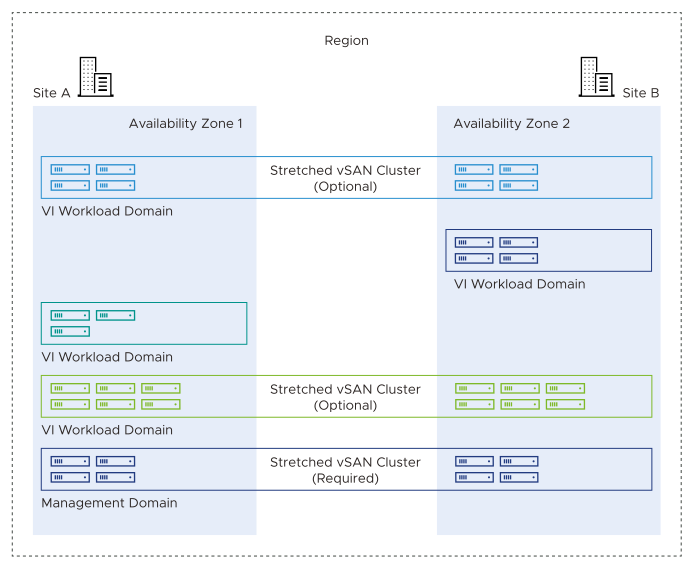Availability zones protect against failures of groups of hosts. You can consider regions to place workloads closer to your customers, comply with data privacy laws and restrictions, and support disaster recovery solutions for the entire SDDC.
Incorporating these concepts in your design can help reduce the blast radius of a failure and can increase application availability.

- Availability zones
-
An availability zone is a fault domain at the SDDC level. Using two availability zones can improve availability of management components running the SDDC, minimize downtime of services, and improve SLAs.
Availability zones are typically located either within the same data center, but in different racks, chassis or rooms, or in different data centers with low-latency high-speed links connecting them. One availability zone can contain several fault domains.
In VMware Cloud Foundation, the following considerations exist:
Because availability zones use VMware vSAN™ stretched clusters, the bandwidth between the zones must be at least 10 Gbps and the round-trip latency must be less than 5 ms.
You can have no more than two availability zones.
-
Having the management domain on a vSAN stretched cluster is a prerequisite to configure and implement vSAN stretched clusters in your VI workload domains.
- Regions
-
Using multiple regions can provide disaster recovery across different VMware Cloud Foundation instances or be used as a location that is closer to your customers.
Each region is one or more separate VMware Cloud Foundation instances and contains one or two availability zones.
Regions are geographically separate, with a maximum round-trip latency between them of 150 ms. If you plan to use NSX Federation between regions, VMware Cloud Foundation supports a maximum of two regions.